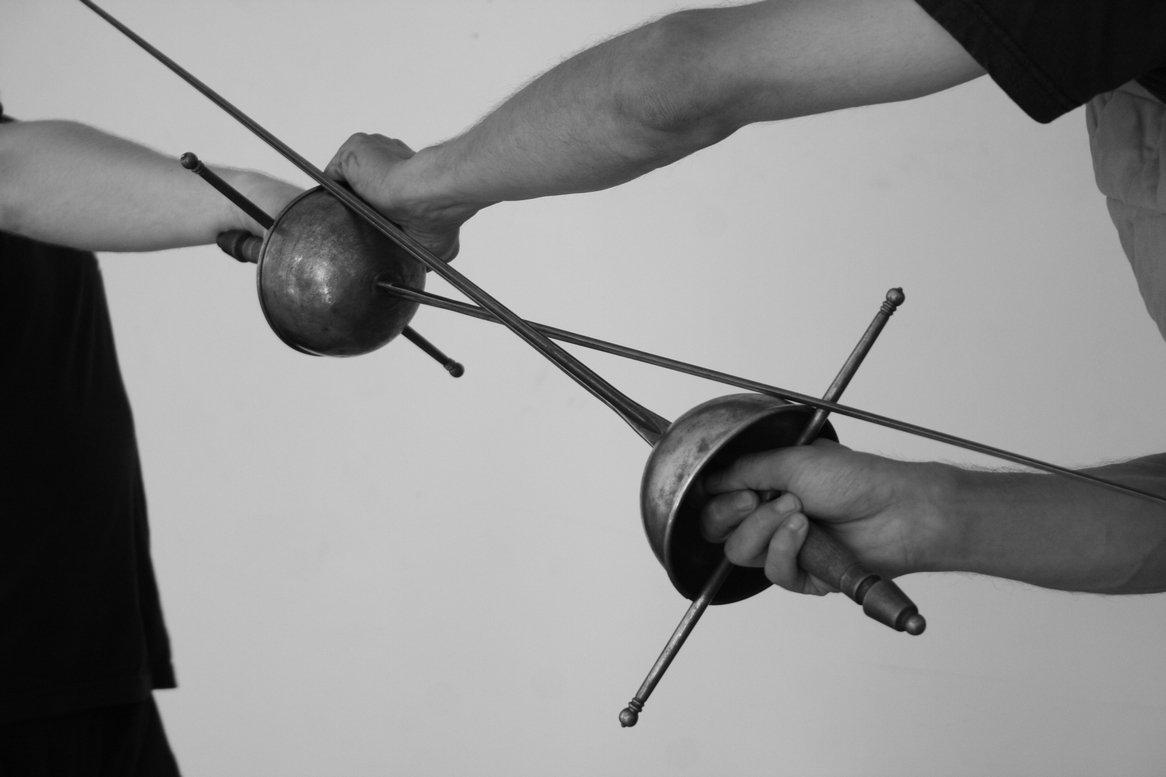School of fighting with bell rapier with extended crossbar and combination rapier/lever, rapier/cloak. Characteristic is high alertness, movement in a circle, dexterous dance steps, vertical posture and work with the rapier bar.

Spanish Fencing School
Spanish swordsmanship (La Verdadera Destreza) had long maintained a reputation for invincibility and indeed was never defeated, but died out as the weapon on which it was based, the Spanish bell rapier, went out of fashion. The elegant rapier was an amalgam of the Spanish spirit and a testament to the martial genius of the masters of the Iberian Peninsula: its long light blade keeps the opponent away from the body, its bell-shaped basket protects safely not only the hand but also the body when used correctly, its long crossbar intercepts and deflects attacks without deflecting the tip of the weapon from its target. The Spaniards, like the Italians, were great supporters of science, and their doctrine was derived from geometrical principles, often closely connected with the then flourishing esotericism, or (in the case of Thibault) Hermeticism itself. A characteristic feature of the school is the movement in a circle and the so-called ganancíe, or advantages that allow to attack safely. The founding master was Jerónimo Sánchez de Carranza (15th century, work Philosophia de las Armas), followed by his pupil Luis Pacheco de Narváez (16th century). Other important masters are Miguel Perez de Mendoza y Quijada, Alvaro Guerra de la Vega and Francisco Lorenz de Rada. A special position is occupied by Girard Thibault, a pupil of Narvaez, who in 1630 published in Amsterdam the Academie de l’Espee, a detailed description of the Spanish school, accompanied by copious illustrations.
The Spanish School taught within the Magisterium is not a literal reconstruction of one selected Spanish master and his terminology, but is a systematized excerpt and interpretation of contemporary treatises so as to not only respect the characteristic techniques of the time as much as possible, but also to allow for their safe rehearsal and staging. The system reconstructed by Ing. Peter Koza is optimized with regard to didactics, coherence and meaningfulness of techniques and already serves as a solid foundation for further development – whether in the direction of historical reconstruction, sports and recreational retreat or staging.
The Spanish school, taught within the A.K.A. (A.R.G.O.) studios, uses the Magisterium system and know-how and builds in the pupils, above all, the basics of correct movement habits, a sense of pace and distance and purity of movement. Petr Nůsek A.R.G.O. develops this foundation in the categories of safe performance and movement culture. The priority aspect of the training is safety, safe and conscious control of the weapon and one’s own body in standard and non-standard conditions. The technical content of the training consists in teaching falls with the weapon, manipulation of the weapon (movement, holding, passing, throwing), emphasis is placed on steps in the lines and in the ring, basic attacks with the slash and point with a focus on accuracy and timeliness. Advanced techniques such as various passive and active covers, binds, transfers, retaliations, cross transfers, fighting using the left hand, left-handed dagger or cloak, etc. are taught in the context of history, grappling and staging, and students learn not only the external form of movement, but also fencing thinking. Thanks to the technical equipment, pupils have the opportunity to use immediately borrowed weapons and protective equipment.
